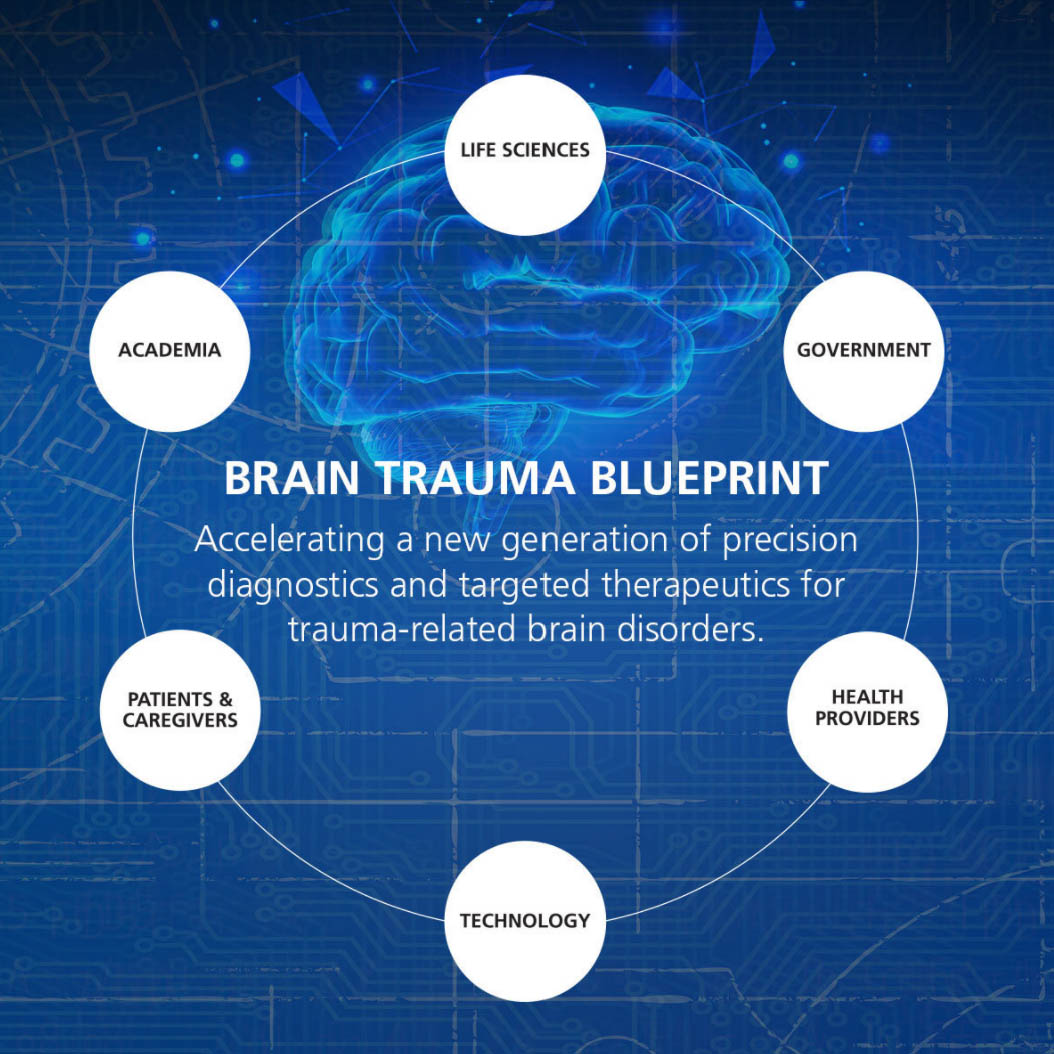
Abstract
Despite considerable efforts to advance the science surrounding traumatic brain injury (TBI), formal efforts supporting the current and future implementation of scientific findings within clinical practice and healthcare policy are limited. While many and varied guidelines inform the clinical management of TBI across the spectrum, clinicians and healthcare systems are not broadly adopting, implementing, and/or adhering to them. As part of the Brain Trauma Blueprint TBI State of the Science, an expert workgroup was assembled to guide this review article, which describes:
- Possible etiologies of inadequate adoption and implementation;
- Enablers to successful implementation strategies; and
- Strategies to mitigate the barriers to adoption and implementation of future research.
Press Release
Brain research and advocacy non-profit Cohen Veterans Bioscience (CVB) announces the publication of the fourth of six manuscripts resulting from its Brain Trauma Blueprint framework program.
Published in the Journal of Neurotrauma on October 29, 2021 [DOI: 10.1089/neu.2021.0067], the article is titled "Implementation of Concepts and Strategies Surrounding Traumatic Brain Injury Clinical Care Guidelines." The work reviews factors that impact adoption and implementation of best practices for the management of traumatic brain injury (TBI). It also examines enablers of implementation and strategies for mitigating the barriers to optimal uptake.
The review reports that barriers to systems-wide adoption of best practices in care include time and resource limitations, variability in patients' point of entry to the healthcare system, the need for coordination of multidisciplinary care, and requirements for consistency in utilization.
Barriers to the adoption of best practices by individual clinicians are also reviewed in the article. Published best practices and guidelines may lack the substantive evidence that many clinicians seek before adopting an approach, require extensive time and resources to implement, and can be complex, often lacking clarity, details, and clinical applicability. To help address system-wide and individual barriers, the authors recommend that clinical care guidelines be frequently updated as new evidence emerges and actively disseminated across multiple channels. In addition, the review describes the need for more effective paradigms and a framework to support and measure the effectiveness of TBI guideline implementation.
"The future of successful TBI research is not only quality study design and discovery; it is also deliberate and thoughtful implementation plans that unite science with impact," said lead author Angela Lumba-Brown, MD, Associate Professor in Emergency Medicine and Pediatrics, and the co-director of the Stanford Brain Performance Center at Stanford University.
"Identifying and targeting concrete strategies to efficiently and effectively implement research findings into real-world practice must be a top priority for all researchers and research consortia; it's the ultimate goal of all research," said co-author David X. Cifu, MD, Associate Dean for Innovation and System Integration in the Virginia Commonwealth University School of Medicine and Principal Investigator of the VA/DOD's Long-term Impact of Military-relevant Brain Injury Consortium (LIMBIC-CENC).
The Brain Trauma Blueprint is a framework that enables stakeholder groups across government, academia, foundations, and industry to advance precision diagnostics and treatments for brain trauma through a coordinated effort. The framework comprises a 12-step process to jointly identify unmet patient needs and associated research priorities, landscape the state of the science, identify research gaps and barriers, and provide recommendations for progress. In addition, the framework provides a call to action for funders and collaborators across the broader stakeholder community to engage in a transparent and coordinated network.
Advancing TBI Care Through a Research Roadmap
Authored by leading experts in the TBI field, the six-part series is being published in the Journal of Neurotrauma and will lay the framework for a roadmap to advance the field based on a State of the Science consensus conference held in 2019 with >125 leaders in the field.
The National TBI Precision Solutions Research Roadmap will guide the development of actionable research priorities that frame the next phase of the roadmap over the coming months.
Additional authors on the paper are Eric M Prager, PhD (Cohen Veterans Bioscience), Nicole Harmon, PhD (Cohen Veterans Bioscience), Michael McCrea, PhD (Medical College of Wisconsin), Michael Bell, MD (Children's National Hospital), Jamshid Ghajar, MD, PhD (Stanford University), Scott Pyne, MD (Defense Health Agency), and David Cifu, MD (Virginia Commonwealth University).
About the Brain Trauma Blueprint
The Brain Trauma Blueprint is a framework to advance precision diagnostics and therapeutics for brain trauma through a process of community stakeholder consensus roadmapping and collaborative execution. More information can be found at www.braintraumablueprint.org.
About Cohen Veterans Bioscience
Cohen Veterans Bioscience is a non-profit 501(c)(3) biomedical research and technology organization dedicated to advancing brain health by fast-tracking precision diagnostics and tailored therapeutics.
